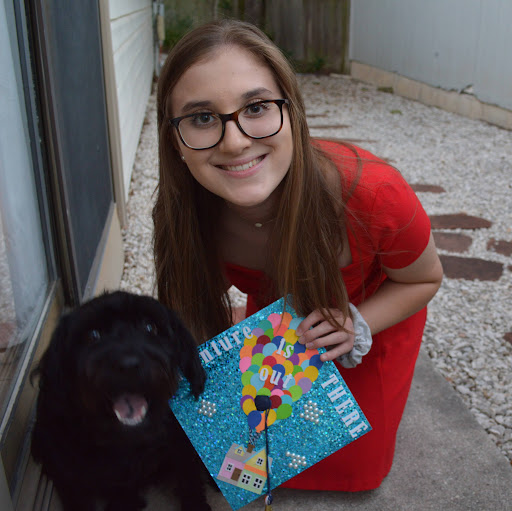Frances Carol Arnold
age ~73
from North Kingstown, RI
- Also known as:
-
- Frances C Arnold
- Frances W Arnold
- Carol C Arnold
- Carol F Arnold
- Francis C Arnold
- Frances Carol Schultz
- Frances C Schultz
- Carol Schultz
- Carola Rnold
Frances Arnold Phones & Addresses
- North Kingstown, RI
- Tulsa, OK
- Broken Arrow, OK
- Sand Springs, OK
- Los Angeles, CA
- Kansas City, MO
- 3100 Summit Blvd, Sand Springs, OK 74063 • 9182454593
Work
-
Company:California institute of technology
-
Address:1200 E California Blvd, Pasadena, CA 91125
-
Phones:6263954162
-
Position:Educator
-
Industries:Professional Membership Organizations
Resumes

Frances Arnold
view source
Frances Arnold
view source
Frances Arnold
view source
Frances Arnold
view sourceLocation:
United States
Wikipedia References

Frances Arnold
Wikipedia

Frances Arnold
view sourceFrances Hamilton Arnold (born 25 July 1956) is an internationally recognized American scientist and engineer. She pioneered methods of directed evolution to ...
Isbn (Books And Publications)


Name / Title
Company / Classification
Phones & Addresses
Educator
California Institute of Technology
Professional Membership Organizations
Professional Membership Organizations
1200 E California Blvd, Pasadena, CA 91125
Educator
CALIFORNIA INSTITUTE OF TECHNOLOGY
Data Processing School · Noncommercial Research Organization · Switchboard and Billing · Chemical Dept · Purchasing Dept · University · Junior College · Accounting/Auditing/Bookkeeping
Data Processing School · Noncommercial Research Organization · Switchboard and Billing · Chemical Dept · Purchasing Dept · University · Junior College · Accounting/Auditing/Bookkeeping
1200 E California Blvd #MC117-15, Pasadena, CA 91125
1201 E California Blvd, Pasadena, CA 91125
6263953492, 6263956811, 6263953630, 6263956024
1201 E California Blvd, Pasadena, CA 91125
6263953492, 6263956811, 6263953630, 6263956024
President
FREMONT ENTERPRISES, INC
PO Box 10030, Canoga Park, CA 91309
President
WEST VALLEY TOYOTA, INC
10731 Le Conte Ave, Los Angeles, CA 90024
Principal
Paul Cotter
Nonclassifiable Establishments
Nonclassifiable Establishments
2017 Pacific Ave, Venice, CA 90291
Us Patents
-
Ecb Deacylase Mutants
view source -
US Patent:6361988, Mar 26, 2002
-
Filed:Apr 4, 2000
-
Appl. No.:09/543084
-
Inventors:Frances H. Arnold - Pasadena CA
Zhixin Shao - Penzberg, DE
Huimin Zhao - San Diego CA
Lorraine J. Giver - Sunnyvale CA -
Assignee:California Institute of Technology - Pasadena CA
-
International Classification:C12N 916
-
US Classification:435196, 4352523, 4353201, 435 912, 435 915, 536 232
-
Abstract:A method for in vitro mutagenesis and recombination of polynucleotide sequences based on polymerase-catalyzed extension of primer oligonucleotides is disclosed. The method involves priming template polynucleotide(s) with random-sequences or defined-sequence primers to generate a pool of short DNA fragments with a low level of point mutations. The DNA fragments are subjected to denaturization followed by annealing and further enzyme-catalyzed DNA polymerization. This procedure is repeated a sufficient number of times to produce full-length genes which comprise mutants of the original template polynucleotides. These genes can be further amplified by the polymerase chain reaction and cloned into a vector for expression of the encoded proteins.
-
Hydantoinase Variants With Improved Properties And Their Use For The Production Of Amino Acids
view source -
US Patent:6524837, Feb 25, 2003
-
Filed:Feb 3, 2000
-
Appl. No.:09/497585
-
Inventors:Frances H. Arnold - Pasadena CA
Oliver May - Stuttgart, DE
Karlheinz Drauz - Freigericht, DE
Andreas Bommarius - Frankfurt/M, DE -
Assignee:California Institute of Technology - Pasadena CA
-
International Classification:C12N 986
-
US Classification:435231
-
Abstract:Hydantoinase enzymes which are mutants of a previously isolated hydantoinase having the amino acid SEQ. ID. NO. 2. The mutants include amino acid substitutions at positions 95, 154, 180, 251 and/or 255 of the wild type hydantoinase (SEQ. ID. NO. 2). The mutant hydantoinases, like the parent hydantoinase, are used in the production of optically pure amino acids.
-
Method For Creating Polynucleotide And Polypeptide Sequences
view source -
US Patent:6537746, Mar 25, 2003
-
Filed:Dec 4, 1998
-
Appl. No.:09/205448
-
Inventors:Frances Arnold - Pasadena CA
Zhixin Shao - Penzberg DE
Alexander Volkov - South Pasadena CA -
Assignee:Maxygen, Inc. - Redwood City CA
-
International Classification:C12Q 168
-
US Classification:435 6, 435 911, 435 912, 435 691, 4353201, 536 27, 935 47
-
Abstract:The invention provides methods for evolving a polynucleotide toward acquisition of a desired property. Such methods entail incubating a population of parental polynucleotide variants under conditions to generate annealed polynucleotides comprising heteroduplexes. The heteroduplexes are then exposed to a cellular DNA repair system to convert the heteroduplexes to parental polynucleotide variants or recombined polynucleotide variants. The resulting polynucleotides are then screened or selected for the desired property.
-
Microfabricated Cell Sorter For Chemical And Biological Materials
view source -
US Patent:6540895, Apr 1, 2003
-
Filed:May 21, 1999
-
Appl. No.:09/325667
-
Inventors:Charles F. Spence - Arcadia CA
Anne Y. Fu - Hacienda Heights CA
Stephen R. Quake - San Marino CA
Frances H. Arnold - Pasadena CA -
Assignee:California Institute of Technology - Pasadena CA
-
International Classification:G01N 2726
-
US Classification:204450, 204451, 204600, 204601, 4352831, 4352861, 4352865, 4352866
-
Abstract:The invention provides a microfabricated device for sorting cells based on a desired characteristic, for example, reporter-labeled cells can be sorted by the presence or level of reporter on the cells. The device includes a chip having a substrate into which is microfabricated at least one analysis unit. Each analysis unit includes a main channel, having a sample inlet channel, typically at one end, and a detection region along a portion of its length. Adjacent and downstream from the detection region, the main channel has a discrimination region or branch point leading to at least two branch channels. The analysis unit may further include additional inlet channels, detection points, branch points, and branch channels as desired. A stream containing cells is passed through the detection region, such that on average one cell occupies the detection region at a given time. The cells can be sorted into an appropriate branch channel based on the presence or amount of a detectable signal such as an optical signal, with or without stimulation, such as exposure to light in order to promote fluorescence.
-
Oxygenase Enzymes And Screening Method
view source -
US Patent:6902918, Jun 7, 2005
-
Filed:Feb 9, 1999
-
Appl. No.:09/246451
-
Inventors:Frances H. Arnold - Pasadena CA, US
Hyun Joo - Suwon, KR
Zhanglin Lin - Beijing, CN -
Assignee:California Institute of Technology - Pasadena CA
-
International Classification:C12N009/00
C12N009/02
C12N001/20
C12N015/00
C07H021/04 -
US Classification:435189, 435 4, 435 6, 435 25, 435 691, 435183, 4352523, 4353201, 536 232, 536 234, 536 237
-
Abstract:A method for detecting the presence of an oxygenated compound which is produced when a substrate is reacted with an oxygenase for the substrate. The method involves reacting a coupling enzyme with the oxygenated compound to form a polymeric oxygenated compound which is fluorescent or luminescent. Measurement of the fluorescence or luminescence of the polymeric oxygenated compound provides indirect detection of the oxygenated compound produced by reaction of the oxygenase with the substrate. The method is carried out in a whole cell environment wherein the cell is transformed to express both the oxygen a set being screened and the coupling enzyme. The method can be used to measure the activity of monooxygenases and dioxygenases on aromatic substrates. The method is amenable to large scale screening of enzyme mutants to isolate those with maximum oxygenase activity.
-
Directed Evolution Of Oxidase Enzymes
view source -
US Patent:7098010, Aug 29, 2006
-
Filed:Nov 27, 2000
-
Appl. No.:09/722602
-
Inventors:Frances H. Arnold - Pasadena CA, US
Ioanna P. Petrounia - Pasadena CA, US
Lianhong Sun - Pasadena CA, US -
Assignee:California Institute of Technology - Pasadena CA
-
International Classification:C12N 9/02
C12N 1/20
C12N 15/00
C12Q 1/68
C12Q 1/00
C12P 21/04
C07H 21/04 -
US Classification:435189, 435 4, 435 6, 435 691, 435 711, 435440, 4352523, 4353201, 536 232, 536 237
-
Abstract:This invention relates to the expression of improved polynucleotide and polypeptide sequences encoding for eukaryotic enzymes, particularly oxidase enzymes. The enzymes are advantagoeusly produced in conventional or facile expression systems. Various methods for directed evolution of polynucleotide sequences can be used to obtain the improved sequences. The improved characteristics of the polypeptides or proteins generated in this manner include improved expression, enhanced activity toward one or more substrates, and increased thermal stability. In a particular embodiment, the invention relates to improved expression of the galactose oxidase gene and galactose oxidase enzymes. GAO mutants that are highly active and/or thermostable are disclosed.
-
Directed Evolution Of Galactose Oxidase Enzymes
view source -
US Patent:7115403, Oct 3, 2006
-
Filed:May 16, 2000
-
Appl. No.:09/571553
-
Inventors:Frances H. Arnold - Pasadena CA, US
Ioanna P. Petrounia - Pasadena CA, US
Lianhong Sun - Pasadena CA, US -
Assignee:The California Institute of Technology - Pasadena CA
-
International Classification:C12N 9/02
C12N 1/20
C12N 15/00
C12Q 1/68
C12Q 1/00
C07H 21/04
C12P 21/04 -
US Classification:435189, 435 4, 435 6, 435 691, 435 711, 435440, 4352523, 4353201, 536 232, 536 237
-
Abstract:This invention relates to the expression of improved polynucleotide and polypeptide sequences encoding for eukaryotic enzymes, particularly oxidase enzymes. The enzymes are advantageously produced in conventional or facile expression systems. Various methods for directed evolution of polynucleotide sequences can be used to obtain the improved sequences. The improved characteristics of the polypeptides or proteins generated in this manner include improved expression, enhanced activity toward one or more substrates, and increased thermal stability. In a particular embodiment, the invention relates to improved expression of the galactose oxidase gene and galactose oxidase enzymes. GAO mutants that are highly active and/or thermostable are disclosed.
-
Method For Creating Polynucleotide And Polypeptide Sequences
view source -
US Patent:7166466, Jan 23, 2007
-
Filed:Feb 19, 2003
-
Appl. No.:10/371168
-
Inventors:Frances Arnold - Pasadena CA, US
Zhixin Shao - Penzberg DE, US
Alexander Volkov - South Pasadena CA, US -
Assignee:California Institute of Technology - Pasadena CA
-
International Classification:C12N 15/00
C12Q 1/68
C07H 21/02
C07H 21/04 -
US Classification:435440, 435 6, 536 231, 536 243
-
Abstract:The invention provides methods for evolving a polynucleotide toward acquisition of a desired property. Such methods entail incubating a population of parental polynucleotide variants under conditions to generate annealed polynucleotides comprising heteroduplexes. The heteroduplexes are then exposed to a cellular DNA repair system to convert the heteroduplexes to parental polynucleotide variants or recombined polynucleotide variants. The resulting polynucleotides are then screened or selected for the desired property.
Classmates

Frances Arnold
view sourceSchools:
Orlando High School Orlando FL 1992-1996
Community:
Milena Mira, Daniel Nicholas, Barbara Barber

Frances Wode (Arnold)
view sourceSchools:
Catonsville High School Baltimore MD 1939-1943
Community:
James Eckman, Karl Salvatore

Frances Arnold (Klingbeil)
view sourceSchools:
Pacific Union College Pr Angwin CA 1947-1951
Community:
Elizabeth Sprague, Robert Gepford, Kathy Silsby, Meryl Sprengel

Frances Arnold (Patten)
view sourceSchools:
Glovertown Central High School Glovertown Peru 1969-1973
Community:
Roger Peterson, Ken Brown

Frances M. Arnold (Holt)
view sourceSchools:
Wiley High School Terre Haute IN 1943-1947
Community:
Cookie Stark, Tim Matherly, Roger Larrison

Frances Arnold
view sourceSchools:
Ware County Magnet School Manor GA 2001-2005
Community:
Rifka Tannenbaum

Frances Dare (Arnold)
view sourceSchools:
Shawnee High School Shawnee OK 1952-1956
Community:
Sarah Jones, Preston Keel, Ron Henderson, Virginia Yates

Frances Arnold (Barclay)
view sourceSchools:
Greenville High School Greenville FL 1959-1963
Community:
Donna Wasdin, Martha Hart, Richard White, Betty Langford, Jackie Miller
Myspace

Frances Arnold
view source
Frances Arnold
view source
Frances Arnold
view source
Frances Arnold
view source
Frances Arnold
view source
Frances Arnold
view source
Frances Adams Arnold
view source
Frances Migmon Arnold
view sourceGoogleplus

Frances Arnold
Work:
Namaste Nutritionist - Founder
Education:
Western Community College, University of Nevada, Reno, Sea Mar
Tagline:
A stranger is only a friend you haven't met yet.

Frances Arnold
Tagline:
Evolution, biofuels, biotechnology

Frances Arnold

Frances Arnold

Frances Arnold
Youtube
News

Second paper from lab of Nobel Prize winner to be retracted
view source- Sdhof is not the only Nobelist who has retracted papers recently: Molecular biologist Gregg Semenza has had 11 papers retracted, 10 of them since 2022; and chemical engineer Frances Arnold retracted a Science paper in 2020.
- Date: Aug 26, 2024
- Category: Science
- Source: Google

Teaching Nature to Break Man-made Chemical Bonds
view source- "Nature is an amazing chemist, and her repertoire now includes breaking bonds in siloxanes previously thought to evade attack by living organisms," says Frances Arnold, the Linus Pauling Professor of Chemical Engineering, Bioengineering and Biochemistry at Caltech and winner of the 2018 Nobel Prize
- Date: Jan 25, 2024
- Category: Science
- Source: Google

Gender funding gap grows when research pitches get personal: study
view source- In October, Canadian scientist Donna Strickland became just the third woman in history to win the Nobel Physics Prize. Twenty-four hours later, US biochemist Frances Arnold was awarded the chemistry prize, only the fifth woman to receive the honour. Its convenient for some people to believe there
- Date: Feb 09, 2019
- Category: Headlines
- Source: Google

Nobel prize in chemistry awarded for pioneering work on proteins – live
view source- In 1993, Frances Arnold performed the first directed evolution of enzymes. She has since refined the methods that are now used around the world to develop new catalysts. Among their applications are more environmentally friendly chemical manufacturing to produce substances such as pharmaceuticals an
- Date: Oct 03, 2018
- Category: Headlines
- Source: Google

Trio wins chemistry Nobel for work on antibody drugs, smart enzymes
view source- Frances Arnold of the California Institute of Technology, George Smith from the University of Missouri and Gregory Winter of Britains MRC Laboratory of Molecular Biology were awarded the prize for pioneering science in enzymes and antibodies.
- Date: Oct 03, 2018
- Category: Headlines
- Source: Google

Bacteria that make high energy tiny carbon rings
view source- Linus Pauling Professor of Chemical Engineering, Bioengineering and Biochemistry worked at the lab of Frances Arnold at Caltech using techniques previously used by Arnolds lab to create bacteria with properties they desire. Earlier techniques have altered bacteria to create strains that produce car
- Date: Apr 09, 2018
- Category: Health
- Source: Google

Researchers 'Breed' Silicon-Carbon Bonds From Proteins, A New Model For Alien Life?
view source- To land to their findings, the researchers -- Frances Arnold, Russell Lewis, Kai Chen and Jennifer Kan -- created the bond using a process of artificial selection dubbed as directed evolution, which was pioneered by Arnold in the 1990s. They started with a protein found in the genomic sequence of Rh
- Date: Nov 28, 2016
- Source: Google

Nature Is Giving Scientists Hope In Making Silicon-based Lifeforms
view source- which is to have an improved biological function than the previously developed enzymes. Mail Onlinereported that this process is called directed evolution, introduced by Frances Arnold, Caltech chemical engineering, bioengineering and biochemistry professor and the study's principal investigator.
- Date: Nov 26, 2016
- Source: Google
Get Report for Frances Carol Arnold from North Kingstown, RI, age ~73








